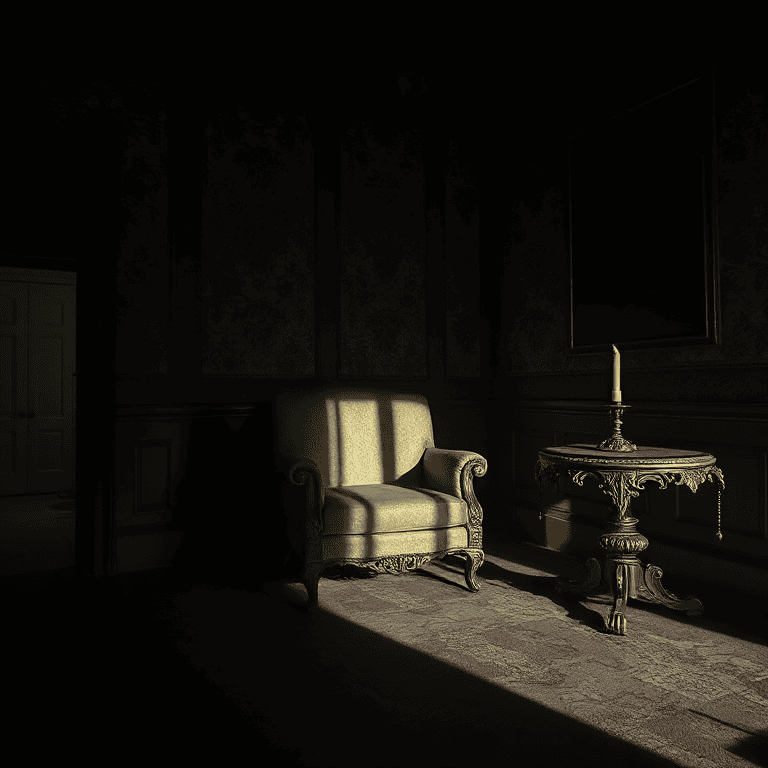The Free Thrill of Public Domain Mystery Books
Every year we are blessed with the gifts of public domain works. Although every classic may not be amazing, many works from my past need to be revisited and reevaluated. Public domain media gives us an opportunity to make those valuations while enjoying some really good stories. Public domain work has not always had an easy ride, especially in the United States. Intellectual property laws can get really sticky if big corporations aren’t happy with legislation.
If you’re a mystery fan, public domain books are like stumbling into an unlocked library stocked with classics that defined an entire genre. No fees. No subscriptions. Just timeless tales of murder, intrigue, and sharply-drawn detectives who set the gold standard for crime fiction.
But before we get to the list of must-reads, let’s talk about what public domain actually means—and why it’s worth celebrating right now.
What Is the Public Domain and Why Does It Matter?
In the U.S., a work enters the public domain when it’s no longer protected by copyright. Think of it as intellectual property that’s been set free—available to be read, shared, and adapted by anyone, legally.
Of course, this wasn’t always so straightforward. Thanks to the 1998 Copyright Extension Act, works published after 1923 got stuck in copyright limbo for 20 years. New titles only started entering the public domain again in 2019, and every January 1st, we welcome another batch. It’s like New Year’s Day for bookworms.
Why does this matter? Public domain books are literary blueprints. They belong to everyone. They gave us the archetypes—the genius detective, the locked-room mystery, the criminal mastermind—that writers still riff on today.
Your Public Domain Mystery Starter Kit
Here’s the short list of essential reads that shaped the mystery genre we know and love:
Sherlock Holmes: The Granddaddy of Detectives
Arthur Conan Doyle’s Holmes stories aren’t just classics—they’re required reading. Doyle’s earlier works are all public domain, so you can dive straight into:
- A Study in Scarlet (1887) — Holmes and Watson’s legendary first case.
- The Adventures of Sherlock Holmes (1892) — Includes “A Scandal in Bohemia,” where Holmes meets the woman.
- The Memoirs of Sherlock Holmes (1893) — Home to “The Final Problem” and that waterfall showdown with Moriarty.
Holmes didn’t just solve crimes—he created the mold for nearly every fictional detective who followed.
Agatha Christie: The Queen, Early and Unfiltered
Christie’s pre-1926 works show her genius in its raw, emerging form. These books introduced two of her most iconic sleuths:
- The Mysterious Affair at Styles (1920) — Hercule Poirot’s grand entrance. A perfect mix of charm and logic.
- The Secret Adversary (1922) — Enter Tommy and Tuppence, a pair of amateur detectives with wit to spare.
- The Murder on the Links (1923) — Poirot tackles a murder in France with his signature flair.
- Poirot Investigates (1924) — Short stories that prove Christie could pack a punch in 20 pages.
Christie’s genius lies in the puzzle—tight, precise, and surprising every time.
The Founding Fathers (and Mothers) of Crime Fiction
- The Murders in the Rue Morgue (1841) — Edgar Allan Poe practically invented the detective story here. Dupin’s logic-driven methods laid the groundwork for Holmes.
- The Woman in White (1859) — Wilkie Collins gave us suspense, deception, and the gothic flair that mystery lovers still crave.
- The Leavenworth Case (1878) — Anna Katherine Green broke new ground as one of the first women to write detective fiction.
These stories don’t just entertain—they built the genre brick by brick.
The Hidden Gems You Shouldn’t Skip
- The Innocence of Father Brown (1911) — G.K. Chesterton’s priest-detective brings wisdom and empathy to crime-solving.
- The Cask (1920) — Freeman Wills Crofts perfected the “howdunit,” making readers focus on how the crime was committed rather than just who did it.
- Whose Body? (1923) — Dorothy L. Sayers introduced Lord Peter Wimsey, a dapper detective with a sharp wit and sharper mind.
These aren’t just stories—they’re fingerprints of the genre’s evolution.
Where to Get These Books
If you’re ready to lose yourself in these classics, here’s where to look:
- Project Gutenberg — The best place for free, digital editions of public domain works. No frills, no price tag.
- LibriVox — Audiobooks read by volunteers. Perfect for mystery fans on the move.
- Internet Archive — A goldmine for scanned editions that preserve the original look and feel.
A Quick Word About Editions
Here’s the catch: While the original texts are fair game, many modern editions include new introductions, notes, or editing—and that extra material can still be under copyright. So if you’re choosing between a free version and a polished paid edition, it comes down to preference. Do you want clean formatting and bonus content, or are you cool with a no-frills PDF? Either way, the story’s still the story.
These Stories Still Matter to the Public
These public domain mysteries aren’t relics. They’re the foundation of every twisty whodunit, every brooding detective, and every clever reveal we see in modern fiction. Without Poe’s Dupin, there’s no Holmes. Without Holmes, there’s no Poirot, no Marlowe, no Bosch.
Reading these works connects us to a time when the rules were being written—when writers were inventing the blueprint for an entire genre. And here’s the best part: they’re still as sharp, surprising, and entertaining today as they were a century ago.
So whether you’re revisiting Sherlock for the hundredth time or discovering Christie’s early works, these mysteries remind us why we fell in love with crime fiction in the first place.
And who doesn’t love a good puzzle, especially when it’s free?







